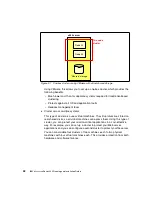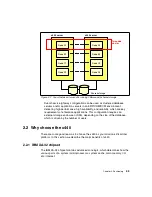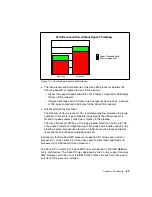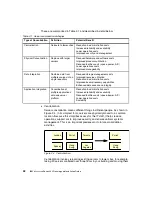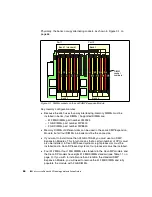
Chapter 2. Positioning
53
to a single server room, or moving 200 servers originally installed across 20
locations to three data centers.
– Relocating existing servers to one or fewer IT sites
Centralization, or data center consolidation, may be a first step for an
organization after a merger. After a merger, the resulting entity does not
want to attempt merging applications; however, they will collocate their
systems as a first step.
For both servers and storage systems, two subcategories of centralization
are defined:
•
Virtual centralization, which is mainly made through the network
•
Physical centralization, where hardware is physically moved to
different locations
Centralization is often the initial step a company takes toward controlling
costs through consolidation. It’s also generally the first step taken toward
rationalizing the architecture after a merger or acquisition.
By simply relocating existing servers to fewer numbers of IT sites,
economies of scale of operation can provide simplified management and
cost improvement.
– Virtual centralization or remote management
You can begin centralization in small steps. With virtual centralization or
remote management, physically dispersed servers or storage systems are
logically centralized and controlled through the network. Hardware
remains physically distributed, but is brought under a common umbrella of
systems management and network management tools. Operations costs
can therefore be reduced, and system availability can be improved.
– Physical centralization or server relocation
Existing servers or storage systems are physically relocated to one or
fewer IT sites. Because this simplifies access for the IT staff, it helps
reduce operations support costs, improves security, and ensures uniform
systems management. This is a step in the right direction, but the payback
is relatively low. However, it is an important predecessor to future
consolidation activities.
Physical consolidation
Physical consolidation is the replacement or reduction of some number of
smaller systems with fewer and more powerful systems. This consolidation
does have advantages:
– It improves availability because there are fewer points of failure.
– It can reduce the cost and complexity of system communications.
– It simplifies operations.
Summary of Contents for 8687 - Eserver xSeries 440
Page 2: ......
Page 8: ...vi IBM xSeries 440 Planning and Installation Guide...
Page 48: ...34 IBM xSeries 440 Planning and Installation Guide...
Page 76: ...62 IBM xSeries 440 Planning and Installation Guide...
Page 120: ...106 IBM xSeries 440 Planning and Installation Guide...
Page 199: ...0 2 spine 0 17 0 473 90 249 pages IBM xSeries 440 Planning and Installation Guide...
Page 200: ......
Page 201: ......




